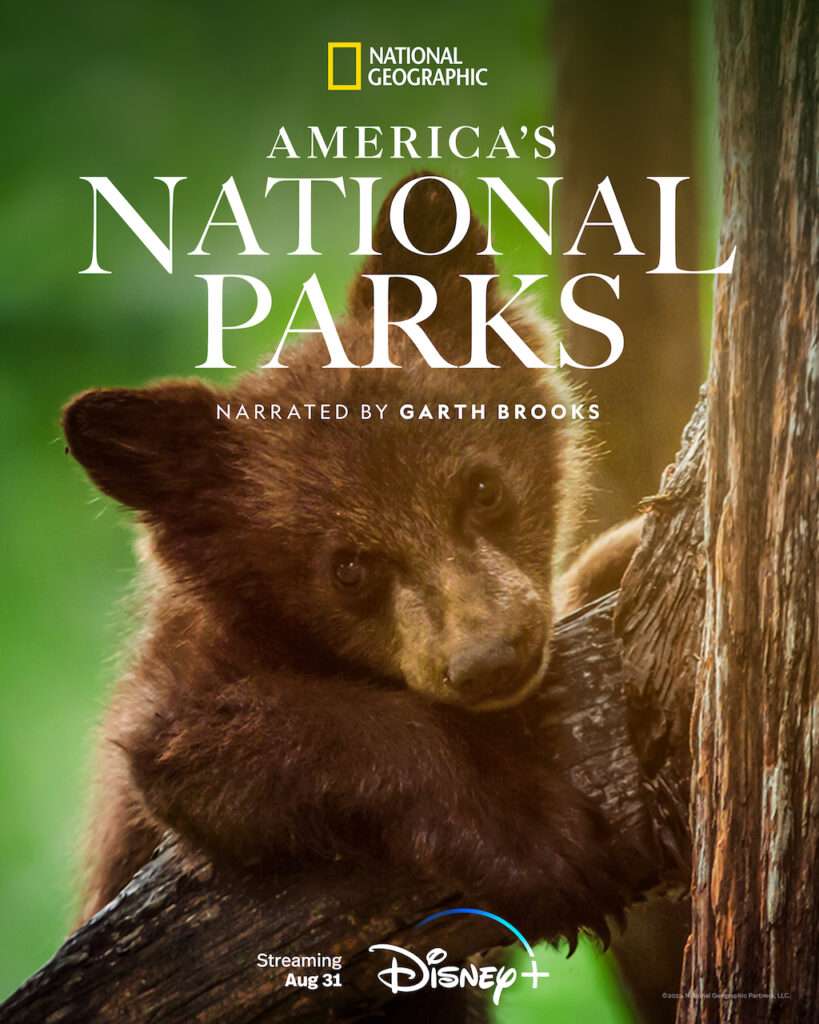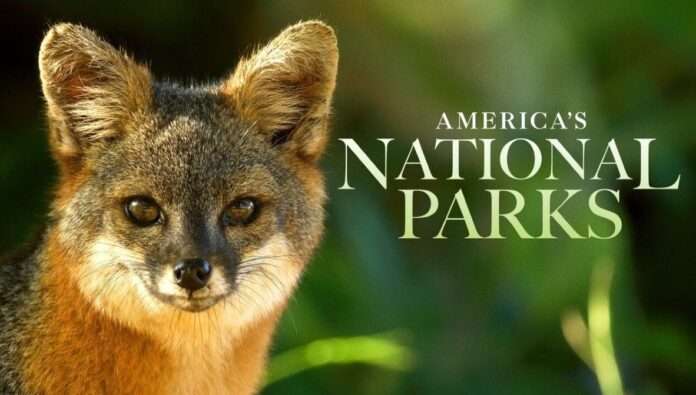In its second season, National Geographic’s America’s National Parks explores five new locations and the critical efforts to protect these vital ecosystems.
Narrated by the number one-selling solo artist in U.S. history, Garth Brooks takes viewers to Grand Teton, Biscayne, the Channel Islands, Lake Clark, and Voyageurs National Parks. The new season gets underway this week on the National Geographic channel and is available to stream on Disney+ June 7.
The team worked with new high-speed cameras, motion-controlled macro tech, remote cameras, drones, hyper-lapse photography, and the latest in underwater cameras to capture UV coral.
We caught up with Executive Producer at Wildstar Films, Anwar Mamon, about the season, the challenges of filming wildlife, and the magical encounters in season two of America’s National Parks.
*This interview is edited for length and clarity.
Ethos: How did you pick the parks for this year or this season?
AM: I think because America’s National Parks is such an interesting brand for National Geographic, we were really keen this season to highlight some of the lesser-known parks, or some of the parks that might have some more surprises for the audience.
It’s also important for Americans and the global audience to look at the variety of habitats that are found in America. And the best way to do this is to use some of those national parks and to focus on some of the ones that we don’t know much about.
Ethos: Was there one that stood out to you from this season in particular?
AM: I have to say, I’m a big fan of the Channel Islands area. It’s a really beautiful place. I mean, all of the parks are beautiful, but not only are the Channel Islands really beautiful but they’ve got a really timely conservation story. What the people have done there, what the scientists have done, what the conservation community has done, is something really special.
They’ve given nature the space to build back. The way that that park has been rejuvenated, and the way that wildlife has been given a space to make a comeback is really special.
Ethos: How much time did you have to spend in the parks?
AM: The second season of National Parks was actually produced during the pandemic, and in the tail end of the pandemic. We always take precautions and what that meant for us as a British company is that we turned to North American Crew. And we turned to often to the crew that lives very close to the national parks where they ended up filming.
I think that added a new dimension to the footage that we got, too. Usually what we do is we send people to far-flung places, but to send people from the same area to film the wildlife that they might already know and love, or the areas that they know intimately — they know how to get the best shots. I think they really helped the series.
Often what we tried to do is is follow character lead stories in the wildlife. So thinking about the Channel Islands — they have their very own species of fox, the Channel Fox. And we went back over several seasons to follow some individuals, which hopefully emotionally connects the audience to the place and to the wildlife there.
Ethos: What do you hope is the takeaway for the viewers?
AM: I think with all of our films, we’ve always tried to tell big-picture stories, and working with National Geographic we were able to do that for both seasons. We recognize how important protected wild spaces are around the world, but especially in the United States, and other places that are quite built up in their urban environments. But it’s not just the parks themselves that we need to think about. Everything that we do, outside of that protected environment can impact the parks — the animals do not know boundaries. And for it to be a fully functioning ecosystem, we need to look after our backyards. And when we do that, the National Parks will thrive as well.
On this season of America’s National Parks, we do feature the human world a little bit more, such as with Biscayne where we go into how sunscreen can impact the marine environment and how things that we do that you might not even think about — everyday things — can impact the parks.
Ethos: How did the relationship with Garth Brooks come about?
AM: I was very lucky to meet and record with Garth Brooks. The relationship came about because of our executive producer [Janet Han Vissering] and NatGeo who were always looking for an iconic American voice.
I think I’m right in saying Garth had never done a wildlife series like this before. And so that first recording that we did at his studios in Nashville was actually a very special moment. Because the moment —the first line he — you could just feel it in the air that we found the right voice.
And, of course, because of his creativity with songwriting, and his background in songwriting, he has an interesting take on these wildlife stories. And he has interesting ways to read the scripts that emotionally engages audiences. And he’s very cheeky as well, I think he brings a lot of humor to some of the stories that might not have come out with someone else reading the voiceover.
Ethos: How far into parks away did you go or were you allowed to go to get some of the footage?
AM: We have a great relationship with the National Park Service, and we’ve always worked within the rules that were set for us by rangers or by the service. And so depending on some parks, we were able to go off the beaten track. In Season One to capture incredible footage of mountain lions in Grand Canyon National Park, we were given permission to put remote cameras in in places that people wouldn’t normally go. And that’s how we were able to working with local Rangers that are able to get these incredible shots of mountain lions climbing up onto the rim with the entire Grand Canyon in the background.
What we always find is animals, especially bigger predators, take the path of least resistance. So they often do travel on the same path as humans. They often do travel on roads and they often do take the similar routes to us, but they’ll do it at different times.
Well, thank you so much. I’ve watched a few episodes. I’m excited to watch. Watch the rest.
Ethos: Was there an animal or even a plant that kind of surprised you?
AM: All of the shows are full of surprises. I think in season one, there was an incredible story to do with bats feeding, but in season two, we filmed coral using special UV lights, which has rarely been filmed showing how, at night, coral actually produces this fluorescence and beautiful colors, bright yellow, bright red, bright orange, blue. And that fluorescence is a biological response to heat and to protect the coral from the searing sun and Biscayne National Park.
That was filmed at night using military-grade night vision cameras. And so I think finding that mix of stories within the National Park is really interesting, and being able to film things that you wouldn’t normally see as a visitor, because you’re, you’re not there at night, or you don’t have the right equipment, I think is a really special way to show how much is going on outside of how much you might not see with your eye.

Grand Teton Premieres Monday, June 5 at 9/8c on National Geographic
The soaring peaks, lush meadows and endless forests draw nearly 4 million visitors yearly. However, often hidden from view, a hardy cast of animals, from tiny pikas to grizzly bears, tough it out to survive in this iconic, wild wonder of the West. Explore this 300,000-acre patchwork of protected lands and the fascinating hidden lives of those that call Grand Teton National Park home.
Biscayne Premieres Monday, June 5 at 10/9c on National Geographic
Just below Miami, hidden beneath the waves, is a giant nursery: Biscayne National Park. Thousands of animals come to rear their young or deposit them safely in the sand. Turtles, crocodiles, sharks and manatees all depend on the park as a place of refuge in a world of dangers. Biscayne National Park doesn’t just protect its wildlife; it also protects us.
Channel Islands Premieres Monday, June 12 at 9/8c on National Geographic
Discovering Channel Islands: a hidden chain of wild islands in plain sight of Los Angeles—this is the Galapagos of the North. After a short boat ride through the bountiful ocean, you arrive to find rugged beaches, mountains and forests, with unique plants and animals found nowhere else, like the miniature Channel Island fox, the dazzling Garibaldi fish and the rare brown pelican.
Lake Clark Premieres Monday, June 12 at 10/9c on National Geographic
Lake Clark National Park is a hidden gem where animals, plants and people all coexist in harmony. Established in 1980, the park protects the headwaters of the largest sockeye salmon run left on Earth. It’s one of the best places to watch brown bears in America and preserves the Dena’ina, an Indigenous culture whose people still live here sustainably off the land.
Voyageurs Premieres Monday, June 19 at 9/8c on National Geographic
Tucked away in a corner of Minnesota, Voyageurs is a hidden gem full of secrets and surprises. Experience its wildlife and stunning beauty, from the icy grips of winter to the height of summer blooms. Accessible only by boat, this watery wonderland is a mosaic of beautifully clear lakes and pristine forest and home to some of North America’s most iconic species: wolves, moose and great grey owls.
Related on Ethos:


